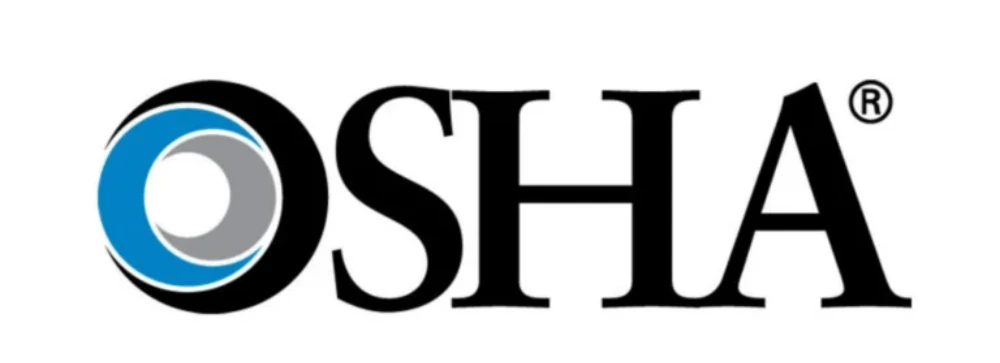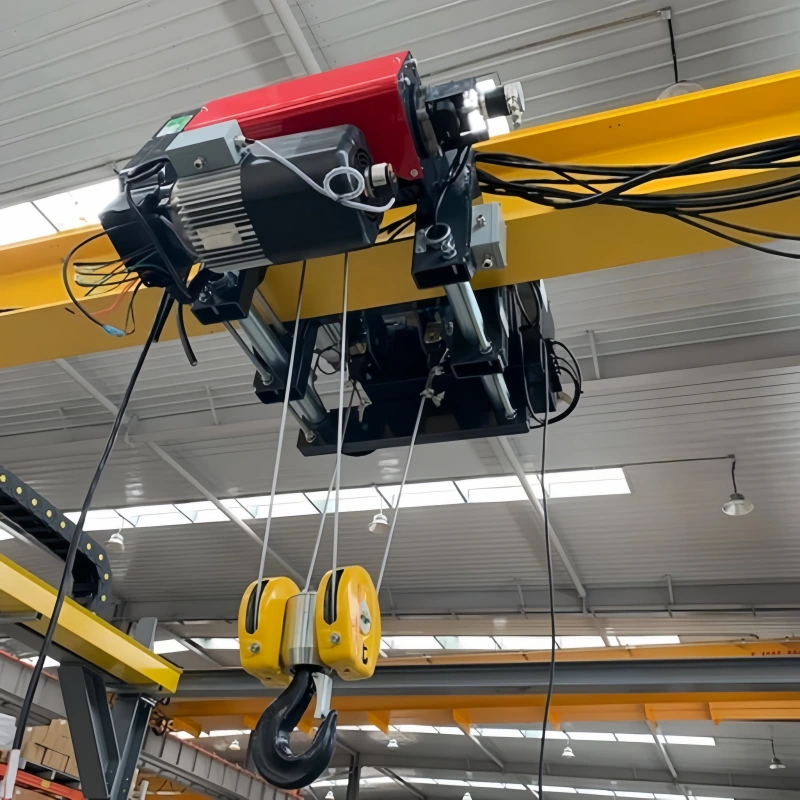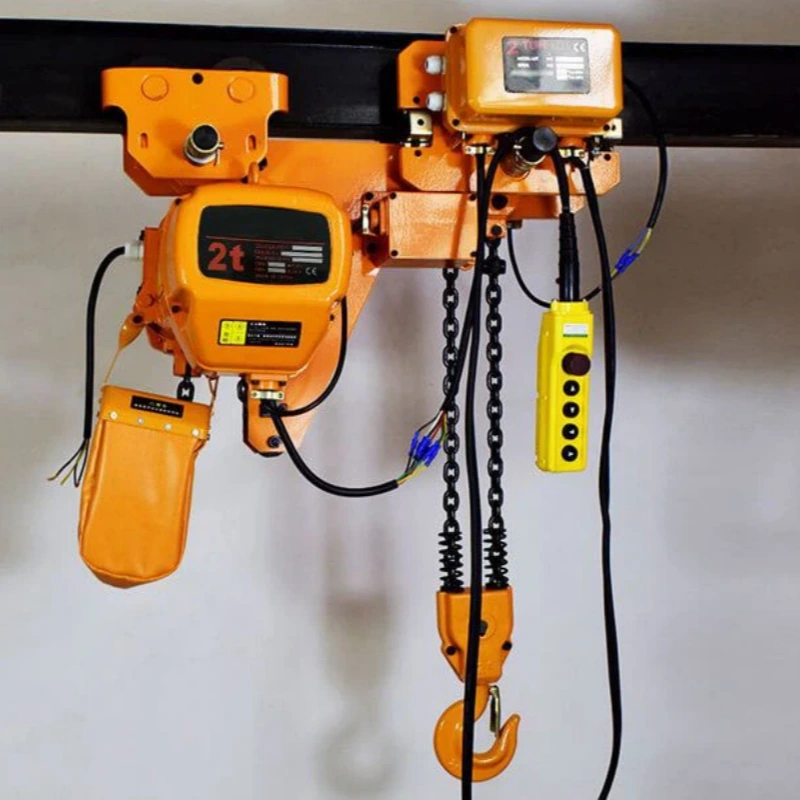You often ask how many slings can be attached to a crane hook. Industry standards recommend that you attach no more than two slings directly to a single crane hook. If your lift requires more, consider using a collector ring.
Always keep the included angle between sling legs under 90 degrees and each sling leg within 45 degrees of the hook’s centerline for maximum safety. Recent advancements, such as load-sensing underhooks and automatic hook positioning systems, help you work more efficiently and reduce risks.
Powerful Machinery delivers certified chain slings and hooks that meet these standards, supporting your commitment to safe and reliable lifting.
Key Takeaways
Attach no more than two slings directly to a crane hook. Use a collector ring for more than two slings to ensure safety.
Keep the included angle between sling legs under 90 degrees. Each sling leg should stay within 45 degrees of the hook’s centerline for stability.
Inspect slings before each use and follow a regular inspection schedule. Document all inspections to comply with safety regulations.
Choose the right hook design and size for your rigging needs. Different hooks support various rigging techniques and load capacities.
Always follow manufacturer guidelines and industry standards. This practice ensures safe and reliable lifting operations.
How Many Slings Can Be Attached to a Crane Hook?
Industry Standards
You need to know how many slings can be attached to a crane hook before starting any lift. Industry standards give you clear guidance. Most regulations state that you should attach no more than two slings directly to a single hook.
This rule helps you keep the load balanced and reduces the risk of slippage or overload. If your lift requires more than two slings, you must use a collector ring or master link to distribute the load safely.
Pay close attention to the angles between the slings. The included angle between sling legs should never exceed 90 degrees. Each sling leg must stay within 45 degrees of the vertical. This practice ensures that the load remains stable and the hook does not experience excessive side loading.
Maximum Included Angle | Maximum Angle from Vertical |
|---|---|
90 degrees | 45 degrees |
International best practices, such as those set by ISO standards, require rigorous design and testing for all lifting components. These standards align closely with U.S. regulations, which recognize ISO as the minimum requirement.
You can trust that any sling or hook certified to these standards will perform reliably when used as directed.
Powerful Machinery’s hooks and chain slings meet or exceed these international standards. You get products that have passed strict testing and certification, giving you confidence in every lift.
Manufacturer Guidelines
You should always consult the manufacturer’s documentation before deciding how many slings can be attached to a crane hook. Each hook and sling has unique specifications. Powerful Machinery provides detailed instructions and compliance requirements for all lifting products.
Here are some key compliance requirements for sling attachment:
Standard | Requirement |
|---|---|
OSHA | Slings must be inspected before each use and at the beginning of each shift by a competent person. |
ASME | Periodic inspections must occur at least once a year, with more frequent inspections for severe service conditions. |
WSTDA | Provides minimum guidelines for sling inspection and maintenance. |
You must also keep proper records and follow inspection schedules:
Documentation Requirement | Source |
|---|---|
Periodic inspections must be documented and records retained as per ASME B30.9 | Mazzella Companies |
Employers must maintain a record of the most recent thorough inspection | Mazzella Companies |
A record of each inspected sling is required per OSHA 1910.184 | Mazzella Companies |
Follow these steps to ensure safe use:
Inspect your sling before each use and schedule periodic checks based on service conditions.
Use a detailed checklist to spot wear, cracks, or elongation.
Remove any sling with signs of damage or missing identification.
Powerful Machinery’s certified hooks and chain slings come with clear documentation. You can find load charts, inspection intervals, and usage recommendations for every product.
Always match the number of slings to the hook’s rated capacity and design. If you have questions about a specific lifting scenario, consult the manufacturer or a qualified lifting engineer.
Tip: Never exceed the recommended number of slings for your hook. Always follow both industry standards and manufacturer guidelines to keep your lifting operations safe and compliant.
Key Factors Affecting Sling Attachment

Hook Design and Size
You must consider the design and size of the hook before attaching multiple sling legs. Different hook types support different rigging techniques and affect how many slings you can safely use. Common hook designs include:
Swivel hooks: Rotate 360 degrees, reducing stress and preventing twisting during rigging.
Grab hooks: Feature a narrow throat for secure chain holding, giving you precise control.
Slip hooks: Have a wide throat for free movement, ideal for dynamic rigging setups.
Self-closing and self-locking hooks: Automatically close or lock under load, increasing safety.
Automatic hooks: Improve efficiency by minimizing manual intervention.
Foundry, sorting, J-hooks, barrel, and specialty hooks: Serve specific rigging needs in unique environments.
The size of the hook determines how many sling legs fit without overcrowding. Always match the hook’s rated capacity to your rigging plan. Powerful Machinery offers hooks in various sizes and designs, ensuring you find the right fit for your lifting scenario.
Sling Types and Configurations
You have several sling options for rigging, each with unique benefits:
Single-leg chain sling: Best for lighter, balanced loads but offers limited stability.
Double-leg chain sling: Provides better stability and load distribution, suitable for heavier lifts.
Triple-leg chain sling: Ideal for heavy or irregular loads, enhancing balance.
Quad-leg chain sling: Delivers maximum stability and load capacity, but requires precise setup.
When you use multiple sling legs, you distribute the load more evenly across the hook. This reduces the risk of overloading any single sling. For quadruple leg chain slings, you gain extra stability and minimize stress on all rigging components.
Load and Angle Considerations

You must evaluate both the load and the angles between sling legs. The maximum included angle between sling legs should never exceed 90 degrees. Each sling leg should stay within 45 degrees of vertical. If you exceed these angles, tension increases on each sling, which can overload your rigging.
Scenario | Sling Angle | Load on Each Sling | Calculation |
|---|---|---|---|
1 | 90° | 500 lbs | (1000/2) |
2 | 10 ft / 8 ft | 625 lbs | (1000/2) x (10/8) |
When you use a two-leg bridle, the angle affects the tension on each sling. If you miscalculate, you risk overloading the sling or the hook. Always use proper rigging techniques and never exceed the maximum included angle. For lifts requiring more than two slings, use a master link or shackle to distribute the load safely.
⚠️ Improper sling attachment can lead to serious accidents. Always inspect your rigging and follow best practices to keep your team safe.
Standards and Safety Guidelines
ASME and OSHA Requirements

You must follow strict standards when working with rigging equipment. ASME B30.9 and B30.10 set clear rules for sling and hook use in lifting operations. These standards help you protect both your team and your equipment. The table below outlines some of the most important requirements:
Requirement Type | Details |
|---|---|
Sling Protection | You must protect slings from sharp edges, corners, and abrasive surfaces during rigging. |
Proof Testing | Always proof test new slings with used or welded fittings before or after fabrication. |
Rated Load Considerations | Include the shape and size of connecting hardware in your rated load calculations for every rigging setup. |
Non-Mandatory Appendix A | Review guidance on sling protection and local bearing pressure for added safety during rigging. |
OSHA regulations also play a major role in rigging safety. You need to secure slings to loads and use hooks with safety latches whenever possible. The following table summarizes key OSHA requirements:
Regulation | Description |
|---|---|
29 CFR §1910.184(c)(6) | Securely attach slings to loads during rigging. |
29 CFR §1910.181(j)(2)(i) | Use hooks that meet the manufacturer’s recommendations; safety latch hooks are preferred. |
29 CFR §1910.181(a)(29) | Use safety hooks with latches to prevent slings or loads from slipping off during rigging. |
29 CFR §1917.45(e)(2) | Latch or secure crane hooks to prevent accidental disengagement. |
29 CFR §1926.753(d)(2)(ii) | Use self-closing safety latches on hooks in specific rigging situations. |
You must inspect your rigging equipment regularly. For normal service, inspect hooks and slings daily before use and yearly for periodic checks. Heavy or severe service conditions require more frequent inspections. Failing to follow these standards can lead to fines, legal action, and damage to your company’s reputation.
⚠️ Always prioritize safety in every rigging operation. Regular inspections and compliance with standards protect your team and your business.
Powerful Machinery Certifications
You can trust Powerful Machinery to deliver certified rigging solutions. The company’s lifting hooks and slings meet or exceed international safety standards. The table below highlights key certifications:
Certification | Standard | Description |
|---|---|---|
G80 Lifting Chain | ASME B30.9 | Meets safety regulations through rigorous testing |
G80 Lifting Chain | ISO 1834 | Confirms performance criteria for lifting equipment |
Certificate of Conformity | Loler, OSHA, ASME, NACM, ASTM | Proves compliance with health and safety regulations |
You receive products that have passed strict quality checks. These certifications ensure your rigging equipment performs reliably in demanding environments. Powerful Machinery’s commitment to safety gives you peace of mind for every lift.
Best Practices for Using Slings
Safe Attachment Checklist
You must follow a clear process when attaching a sling to a crane hook. This step-by-step checklist helps you maintain safety and efficiency in every rigging operation. Review each step before you begin slinging techniques:
Step | Description |
|---|---|
1 | Ensure compatibility between the hook and the lifting medium. |
2 | Inspect the bowl or saddle of the hook for smoothness and radius. |
3 | Verify the correct diameter of the clevis pin. |
4 | Check that the clevis pin is properly secured with a retaining mechanism. |
5 | Conduct a pre-use inspection to confirm all components are correctly matched and secured. |
You should always use hooks and slings that meet international safety standards. Powerful Machinery’s hooks feature safety latches and self-locking mechanisms, which prevent accidental detachment and support secure rigging.
Rigorous testing procedures ensure each product delivers reliable performance during slinging techniques.
Common Mistakes to Avoid
Mistakes during sling attachment can lead to serious injuries, failed lifts, or damage to the load. You must recognize these errors and apply safety tips to prevent them:
Attaching slings to incorrect points causes load instability and increases the risk of falling loads.
Using weak or non-load-bearing points for rigging can damage both the load and your equipment.
Failing to inspect slings before use leads to equipment failure and potential injuries.
Exceeding the rated capacity of a sling or ignoring proper slinging techniques can result in catastrophic accidents.
Neglecting to secure every connection or bypassing safety features on hooks undermines safety.
You should always inspect your rigging before every lift. Never modify slings or use makeshift devices. Keep sling legs straight and avoid kinks. Protect slings from sharp edges with padding or edge guards.
Clear the lift zone and keep personnel out of the danger area. Use tools, not hands, to position slings during slinging techniques. Lift slowly to avoid shock loads and never drag slings from under a load.
Training programs such as Competent Rigger Level 1 and Level 2 teach you proper slinging techniques and load calculations. Pre-lift briefings and standardized terminology help your team communicate effectively and maintain safety throughout the rigging process.
🛡️ Safety tips: Always use certified hooks and slings from Powerful Machinery and follow recommended slinging techniques. Clear communication and ongoing training protect your team and your equipment.
Conclusion
You protect your team and equipment when you follow industry standards and manufacturer guidelines for sling attachment. Powerful Machinery demonstrates its commitment to safety and certified lifting solutions through rigorous testing, steel construction, and compliance with health regulations.
Equipment for agriculture, mining, and repair tasks ensures reliability and efficiency.
Rigorous inspections and proper rigging techniques prevent common hazards.
Hazard Type | Description |
|---|---|
Dropping the load | Results from improper rigging or inspection failures. |
Equipment inspection violations | Lead to accidents; daily checks are essential for safe rigging. |
Always consult documentation and experts for unique lifting scenarios. Prioritize safety every time you approach a rigging operation.
FAQ
How many slings can you attach directly to a crane hook?
You should attach no more than two slings directly to a crane hook. For more than two, use a master link or collector ring to distribute the load safely.
What is the maximum included angle between sling legs?
Keep the included angle between sling legs at or below 90 degrees. This practice helps you maintain load stability and reduces the risk of side loading.
Do Powerful Machinery hooks and slings meet international safety standards?
Yes, Powerful Machinery hooks and chain slings meet or exceed major international safety standards like ASME, ISO, and OSHA. You can trust their certifications for safe lifting operations.
How often should you inspect your slings and hooks?
Inspect slings and hooks before each use.
Schedule periodic inspections based on service conditions.
Document all inspections to comply with OSHA and ASME requirements.
Can you customize chain slings for specific lifting needs?
You can request custom chain slings from Powerful Machinery. Choose your preferred length, configuration, and attachments to fit your project requirements.


